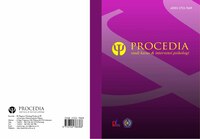Cognitive Behavioral Therapy untuk menurunkan perilaku menyakiti diri pada individu dengan Borderline Personality Disorder
DOI:
https://doi.org/10.22219/procedia.v11i1.23990Abstract
Borderline Personality Disorder (BPD) is a personality disorder that appears in adolescence or early adulthood. The purpose of this study was to determine the role of cognitive behavioral therapy (CBT in reducing self-harm behavior in individuals with BPD. The subject of this study was a 24-year-old female university student who had BPD symptpamans such as irritability, difficulty controlling emotions, self-harm, and frequent suicide attempts. The assessment methods used were psychological interviews, observations, graphic tests, SSCT tests, WHODAS self-reports, and self-harm inventories. The results of the study show that CBT can effectively reduce self-harm behavior in individuals with BPD.
Keywords: Boarderline personality disorder, cognitive behavioral therapy, self-harm
Abstrak
Borderline Personality Disorder (BPD) adalah gangguan kepribadian yang muncul pada masa remaja atau dewasa awal. Tujuan dari penelitian ini adalah untuk mengetahui peran terapi perilaku kognitif dalam mengurangi perilaku menyakiti diri sendiri pada individu dengan BPD. Subjek penelitian ini adalah seorang mahasiswi berusia 24 tahun yang memiliki gejala BPD seperti mudah marah, mudah marah, kesulitan mengendalikan emosi, menyakiti diri sendiri, dan sering mencoba bunuh diri. Metode asesmen yang digunakan adalah wawancara psikologis, observasi, tes grafis, SSCT, laporan diri WHODAS, dan inventarisasi menyakiti diri sendiri. Hasil penelitian menunjukkan bahwa terapi perilaku kognitif dapat mengurangi perilaku menyakiti diri sendiri pada individu dengan BPD.
Kata kunci: Boarderline personality disorder, terapi perilaku kognitif, menyakiti diri sendiri
Downloads
References
Biskin, R.S., & Paris, J. (2012). Management of borderline personality disorder. Canadian Medical Association Journal, 184(17), 1897-1902. https://doi.org/10.1503/cmaj.112055
Bozzatello, P., Garbarini, C., Rocca, P., & Bellino, S. (2021). Borderline personality disorder: Risk factors and early detection. Diagnostics, 11, 1-36. DOI: https://doi.org/10.3390/diagnostics11112142
Cailhol, L., Giqcuel, L., & Raynaud, J. (2012). Borderline personality disorder. In Rey JM (ed), IACAPAP eTextbook of Child and Adolescent Mental Health. Geneva: International Association for Child and Adolescent Psychiatry and Allied Professions.
Clark, D. (2013). Cognitive restructuring. In J. S. Abramowitz, N. Carolina, & M. M. Antony (Eds.), The Wiley Handbook of Cognitive Behavioral Therapy. Wiley-Blackwell. https://doi.org/10.1108/rr-04-2014-0105
Clark, D., & Beck, A. T. (2012). The anxiety and worry workbook: The cognitive behavioral solution. Guildford Publication.
Guerdjikova, A. I., Gwizdowski, I. S., McElroy, S. L., McCullumsmith, C., & Suppes, P. (2014). Treating Nonsuicidal Self-Injury. Current Treatment Options in Psychiatry, 1(4), 325–334. https://doi.org/10.1007/s40501-014-0028-z
Guilé, J. M., & Greenfield, B. (2004). Introduction personality disorders in childhood and adolescence. Can. Child Adolesc. Psychiatry Rev., 13, 51–52.
Hanratty, D., Kilicaslan, J., Wilding, H., & Castle, D. (2019). A systematic review of efficacy of Collaborative Assessment and Management of Suicidality (CAMS) in managing suicide risk and deliberate self-harm in adult populations. Australasian psychiatry, 27(6), 559-564. https://doi.org/10.1177/1039856219848832
Kaess, M., Brunner, R., & Chanen, A. (2014). Borderline Personality Disorder in Adolescence. Pediatrics, 134, 782–793. https://doi.org/10.1542/peds.2013-3677
Kaess, M., Koenig, J., Bauer, S., Moessner, M., Fischer-waldschmidt, G., Mattern, M., Herpertz, S. C., Resch, F., Brown, R., In-albon, T., Koelch, M., Plener, P. L., Schmahl, C., Edinger, A., & Consortium, S. (2019). Self-injury: Treatment, assessment , recovery (star): Online intervention for adolescent non-suicidal self-injury-study protocol for a randpamanized controlled trial. 1–10. https://doi.org/10.1186/s13063-019-3501-6
Kulacaoglu, F., & Kose, S. (2018). Borderline personality disorder (BPD): In the midst of vulnerability, chaos, and Awe. Brain Sciences, 8(201), 1-11. https://doi.org/10.3390/brainsci8110201
Livesley, W. J. (2017). Integrated modular treatment for borderline personality disorder: A practical guide to cpamanbining effective treatment methods. Cambridge University Press
Nelson, J. R. (2011). Teori dan praktek Konseling dan terapi Edisi Ke-4. Pustaka Pelajar
Oldham, J. M. (2006). Borderline personality disorder and suicidality. Am. J. Psychiatry, 163, 20–26. https://doi.org/10.1176/appi.ajp.163.1.20
Sansone, R. A., Sellbpaman, M., & Songer, D. A. (2018). Borderline personality disorder and mental health care utilization: The role of self-harm. Personality Disorders: Theory, Research, and Treatment, 9(2), 188. https://doi.org/10.1037/per0000245
Stepp, S. D., & Lazarus, S. A. (2017). Identifying a borderline personality disorder prodrpamane: Implications for cpamanmunity screening. Pers. Ment. Health, 11, 195–205. https://doi.org/10.1002/pmh.1389
Stepp, S. D., Lazarus, S. A., & Byrd, A. L. (2016). A systematic review of risk factors prospectively associated with borderline personality disorder: Taking stock and moving forward. Pers. Disord. Theory. Res. Treat., 7, 316–323. https://doi.org/10.1037/per0000186
Tarrier, N., Taylor, K., & Gooding, P. (2008). Cognitive-Behavioral Interventions to reduce suicide bahavior: a systematic review and meta-analysis. Behavior Modification, 32(1), 77-108. https://doi.org/https://doi.org/10.1177/0145445507304728
Downloads
Published
How to Cite
Issue
Section
License
Copyright (c) 2023 Risa Nur Amelia

This work is licensed under a Creative Commons Attribution-NonCommercial 4.0 International License.






